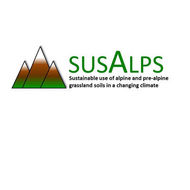Multi-annual grassland mowing dynamics in Germany: spatio-temporal patterns and the influence of climate, topographic and socio-political conditions (2023)
Reinermann S., Asam S., Gessner U., Ullmann T., Kuenzer C.
Frontiers in Environmental Science, 11 (),
doi:10.3389/fenvs.2023.1040551
Abstract
Introduction: Grasslands cover one third of the agricultural area in Germany and are mainly used for fodder production. However, grasslands fulfill many other ecosystem functions, like carbon storage, water filtration and the provision of habitats. In Germany, grasslands are mown and/or grazed multiple times during the year. The type and timing of management activities and the use intensity vary strongly, however co-determine grassland functions. Large-scale spatial information on grassland activities and use intensity in Germany is limited and not openly provided. In addition, the cause for patterns of varying mowing intensity are usually not known on a spatial scale as data on the incentives of farmers behind grassland management decisions is not available.Methods: We applied an algorithm based on a thresholding approach utilizing Sentinel-2 time series to detect grassland mowing events to investigate mowing dynamics in Germany in 2018–2021. The detected mowing events were validated with an independent dataset based on the examination of public webcam images. We analyzed spatial and temporal patterns of the mowing dynamics and relationships to climatic, topographic, soil or socio-political conditions.Results: We found that most intensively used grasslands can be found in southern/south-eastern Germany, followed by areas in northern Germany. This pattern stays the same among the investigated years, but we found variations on smaller scales. The mowing event detection shows higher accuracies in 2019 and 2020 (F1 = 0.64 and 0.63) compared to 2018 and 2021 (F1 = 0.52 and 0.50). We found a significant but weak (R2 of 0–0.13) relationship for a spatial correlation of mowing frequency and climate as well as topographic variables for the grassland areas in Germany. Further results indicate a clear value range of topographic and climatic conditions, characteristic for intensive grassland use. Extensive grassland use takes place everywhere in Germany and on the entire spectrum of topographic and climatic conditions in Germany. Natura 2000 grasslands are used less intensive but this pattern is not consistent among all sites.Discussion: Our findings on mowing dynamics and relationships to abiotic and socio-political conditions in Germany reveal important aspects of grassland management, including incentives of farmers.